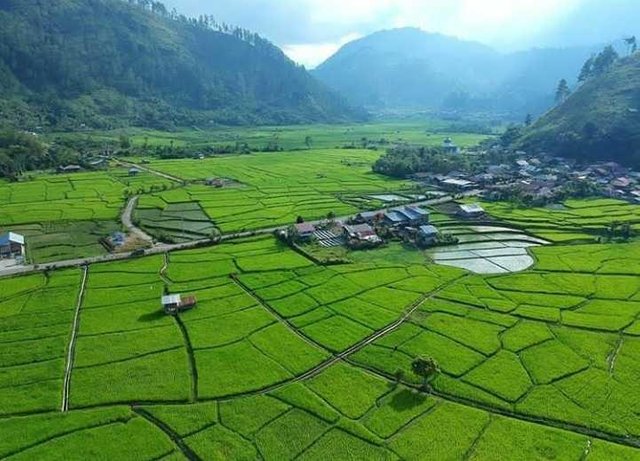benefits of rice fields for humans and environment
The existence of paddy fields has many functions, both for human life and the environment. The function of wetland for human life other than as a producer of food, is also one source of income, place to work, places of recreation, where to seek knowledge, and so forth. The function of wetland for the environment can be seen from the function of paddy fields as a place of life of various plants, breeding various living organisms such as worms, various insects, birds, eels, snakes, and other organisms, play a role in preventing the occurrence of floods, erosion, Avalanche. However, if not properly managed, paddy fields can also have negative impacts on people and the environment, such as water, soil, and air pollution due to chemical use and agricultural mechanization
Wetland is one of the traditional characteristics of community life that is common in some countries where most of the population consumes rice as its main food, such as in Asia (Asia Landmarks, South Asia, and East Asia). Wetland that is characteristic of traditional community life has existed since ancient times. Evidence that wetlands have existed since ancient times according to Rostam and Anuar (1984) has been studied by archaeologists informing that rice farming with rice main crops began in India and China more than 1,000 years ago before Christ. Farming activities of paddy fields with rice staple crops are being developed to other Asian regions, including Indonesia. Because some Asian countries feel rice is suitable as a staple food, the development of rice fields in Asian countries quite rapidly.
Agricultural land in the form of paddy fields is usually characterized by the presence of a bundle that surrounds it with a view to restricting between the fields of rice fields one and other fields of rice fields. In addition, the land bunds are also made for the purpose of preventing excessive outflow of water so that water conditions can be adjusted according to need. Another feature of wetland is the kind of crops grown on paddy fields are usually rice staple crops in the rainy season and crops (beans, corn, tubers), vegetables (long beans, mustard greens, lombok and onions) fruits (melon, papaya and watermelon) and other plants.
The existence of paddy fields has many functions, both for human life and the environment. The function of wetland for human life other than as a producer of food, is also one source of income, place to work, places of recreation, where to seek knowledge, and so forth. The function of paddy fields for the environment can be seen from the function of paddy fields as a place to live various plants, breeding various living organisms such as worms, various insects, birds, eels, snakes, and other organisms, play a role in preventing the occurrence of floods, erosion, Avalanche. However, if not properly managed, paddy fields can also have negative impacts on people and the environment, such as water, soil, and air pollution due to chemical use and agricultural mechanization
